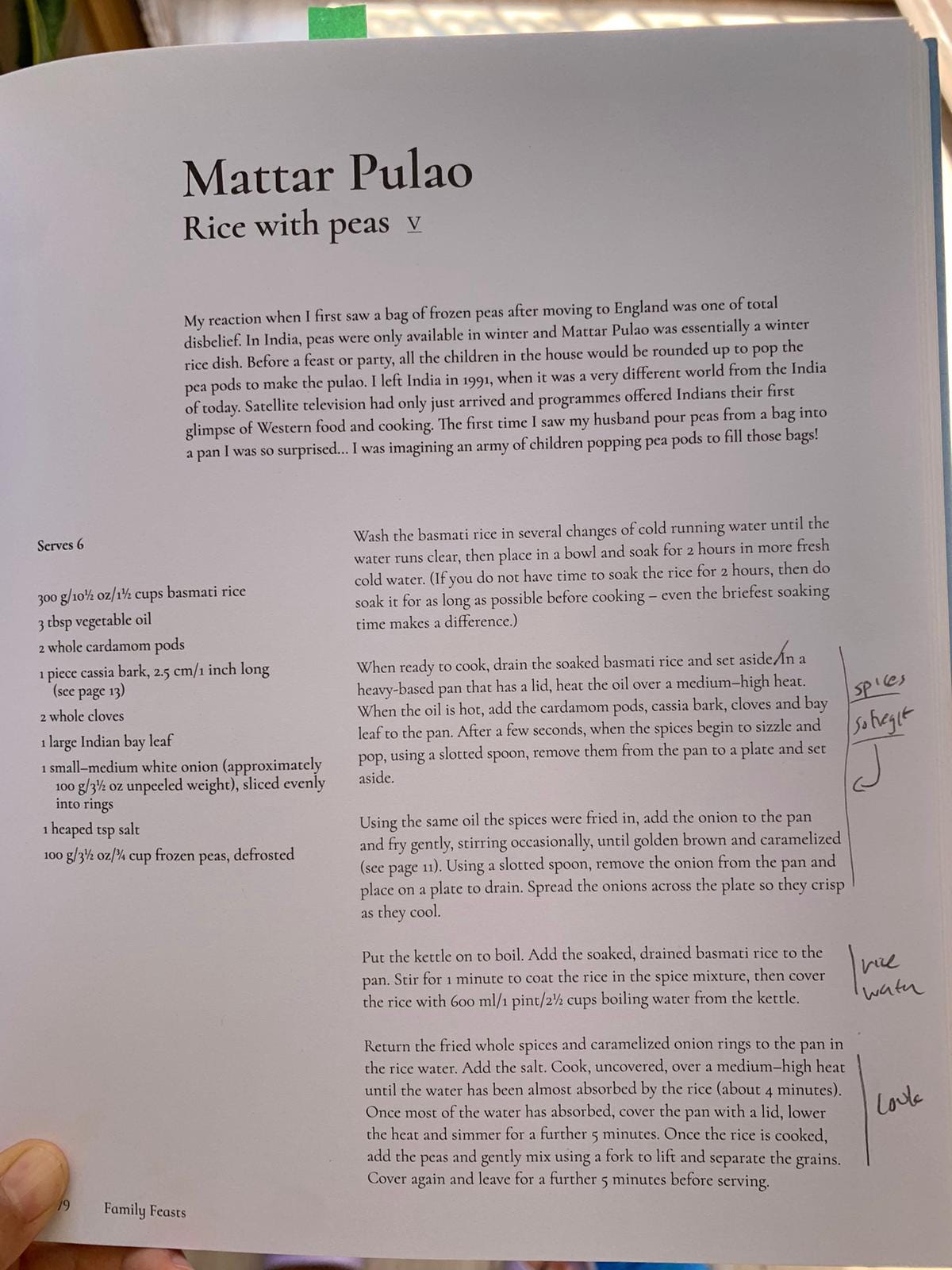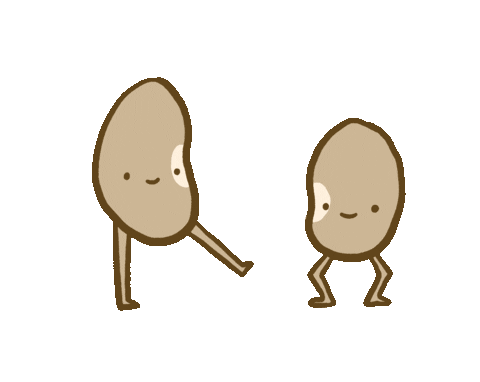I used to be the kind of person who dreaded having to feed myself 3 times a day for the rest of my life. And then the pandemic happened.
Now, I’m the kind of person who cannot accept a job that requires more than 2 days in the office. I have broths to make and onions to caramelize, and I need to be home. What began as a chore has now become an endless creative and intellectual rabbit hole.
I think many of us at some point experience this dread, and it’s the reason why we rely so much on pre-cooked meals and eating out. I don’t judge anyone for that. But in case you’re looking for a way out of that feeling, here is my attempt to help.1
When someone asks me “how can I improve my cooking”, here is my answer: build your cooking intuition.
My Grand Theory of Cooking™, v0.1
I’ve developed this theory over the last four years, which isn’t a lot of time. Those of you with more experience than me may find it overly simplistic. And maybe in 5 years, I’ll have to come back and modify it. But as of this sunny August day in 2024, here is my master formula for developing your cooking intuition and becoming less dependent on recipes:
Intuition, autonomy, and creativity in cooking = templates + technique
In other words, the work of building your intuition and autonomy in cooking means 1) increasing both the number of templates in your repertoire and 2) increasing the number of techniques in your toolbelt.
Let’s start with templates.
(I’ll address technique in part 2.)
I believe most dishes can be boiled down to fundamental components that form their basic skeleton, or what I’ll call a template.
Let’s take the example of a hearty bean stew.
In my world, the anatomy of a bean stew consists of the following, put into a pot in (roughly) the following order:
A fat (oil, butter, animal fat, etc.)
Alliums (onions, leeks, garlic, etc.)
Meat and/or vegetables
Cooked beans
Broth
Throughout: salt and a bit of something acidic
To garnish: herbs or something crunchy
Simple, no? This template has no verbs or specified ingredients in it - only broad categories. It consists only of the essential information we need to create something equivalent or close to a “bean stew”.
If you look up a recipe for any bean stew, you will surely never find it written as above. That’s because this form has absolutely no information on what to do with the alliums, how to cook the beans, how much acid you need, or how to make a broth. Most recipes will specify exactly how to cook each component, and in what quantity or sequence. But in my theory, that’s under "technique”, and we haven’t gotten there yet.
Templates are basically simplified recipes that are easier to remember and riff off of.
Whenever I see a new food or recipe, be it any stew, salad, kimchi, or tacos, I always try to boil it down to a template. Doing so helps me deconstruct the dish, learn from its anatomy, and then plug in any ingredient or cooking method that makes sense, without feeling limited to any concrete set of instructions.
Any dish can turn into a template. Here are some examples:
Most Catalan rice dishes or paella? Sofregit (another deep rabbit hole in itself), rice (also a rabbit hole), broth (also), meat/vegetables (also, and now I’ll stop).
Any noodle stir-fry like japchae or pad thai? Noodles, sauce, meat/vegetables. (And the template for sauce? Something savory - soy sauce, fish sauce, salt; something sweet - sugar, pears, apple, palm sugar in the case of traditional pad thai; something spicy or acidic.)
Most curries? Whole spices, alliums, powdered spices, meat, vegetables, sauce (tomato, coconut, etc. optionally made with nuts), herbs.
Kimchi? Any sturdy vegetable, something salty, something sweet, garlic, ginger. Even red chili pepper is optional.
Pickles? Any vegetable, something salty, something sweet, a vinegar.
Once you deconstruct a dish, you can decide where you want to dig deeper.
For instance, just within the component “broth” in ramen, you could probably find a lifetime’s worth of wisdom and best practices. Same with the component “salt” in kimchi, which traditionally, not only comes from mineral salt, but also anchovies, shrimp, and other seafood. Your adventure is yours to choose.
The more templates you analyze, the more you can understand 1) the role different components play and 2) fundamental patterns on top of which you can develop your own dishes.
Let’s look at another example: salad.
There are boring salads 👇🏼
And then there are exciting, colorful, rich salads!2 🌈 For me, a good, meal-worthy salad is an exercise in textural contrast:
A leafy vegetable - lettuce, spinach leaves, rucula, etc.
A crunchy vegetable or fruit - carrot, cucumber, apple, etc.
A meaty vegetable or fruit - tomato, roasted eggplant, cauliflower, fig, etc.
📌 Another non-plant source of crunch - quicos (my favorite), crushed nachos, etc. I would argue this is the absolute most important ingredient to prevent salad ennui.
A protein or bean - chickpeas, tuna, chicken, cheese, etc.
A grain
Dressing, which, at its simplest, consists of (but not limited to!)
an oil (olive)
an acid (vinegar, lime juice, lemon juice, etc.)
Optional: herbs, fresh or dried
Again, I haven’t said anything about how to prepare any of these items, but for now that doesn’t matter.
Here are two exercises.
First, the next time you eat in a restaurant, channel this cute penguin and think about the following:
What are the fundamental components of this dish? A component can be a broth, sauce, vegetables, a protein, a grain, etc.
Take your best guess: which ingredients were used, and how were they prepared?
What role does each ingredient or component play? Is it adding salt? Sweetness? Acidity? Texture? This question is important, because it will eventually help you make substitutions when you don’t have exactly what a written recipe calls for.
And if you’re in doubt, try asking the waiter/waitress or cook. “How did you make this?” is a bit open-ended, so try something like “Did you use…?” or “I taste x in here, is that what you used?” I’ve found that 99% of the times I ask, I get a rather enthusiastic response. One time, it even got me a private tour of the restaurant’s kitchen and the opportunity to meet its founding chef.
Second, try reading a cookbook cover to cover. Don’t stop to try the recipes; just spend 30 minutes flipping through the book and looking for sets of instructions that seem to occur repeatedly.
Example 1️⃣: In Korean and Japanese cooking, wherever there is soy sauce, there is almost always a sweetener. (How much sweetener? As much as it takes for your taste buds to light up. Trust me, you’ll know, because you’ll have a Ratatouille moment. You know the one.)
Typical Korean sweeteners - sugar, pears, apples, cider, rice syrup
Typical Japanese sweeteners - sugar, mirin, sake
Example 2️⃣: Almost every recipe in Asma’s Indian Kitchen starts with heating oil, butter, or ghee; adding whole spices; and then frying onions, ginger, garlic, or chilis. This is basically an Indian sofrito. Now, all you have to do is master the technique of making sofrito, which is a Youtube video away, and you have the starting point for hundreds of potential dishes.

How to make a good sofrito brings us to technique. Getting into it now would make this post too long, so I’ll be back in 2 weeks with part 2!
3️⃣ Barcelona tips for you
Casa Elizalde is hosting a month-long series titled “Cuina oblidada: un passeig per la memòria gastronòmica de Catalunya” this October. 55,66eur.
Biblioteca Poble-sec - Francesc Boix curated a list of the cookbooks they have available to borrow.
Centre Cívic El Sortidor just announced a ton of new fall workshops. Among them: vegan Taiwanese food; “Mediterranean gastrocinema”; cocktails; wine and cheese pairing; Cambodian food; cooking with flowers; street food of Togo, Benin, and Ghana. 😦😦😦 16,07eur each.
🌏 Language corner

Entre naps i cols, or "between turnips and cabbage”
This very cute Catalan expression means “for some reason or the other”. The site I linked uses this example:
Entre naps i cols, ens hem gastat gairebé 60€ a la fira. Or, “For some reason or another, we spent almost 60 euros at the fair.”
I can’t seem to find exactly where this expression comes from, but the closest I found was a tradition in Arenys de Mar (~43km north of Barcelona) where on the night of Three Kings Day (January 5), young men, els penjanaps, or turnip-hangers, go and hang turnips on the balconies of women they fancy 💖with love poems💖 and the women, els penjacols, do the same, but with cabbage.3 Someone needs to make a rom-com set in Arenys de Mar, immediately.
I’m headed to South Korea 🇰🇷 this week to visit my parents! My mom and I have grand cooking plans, and I will most likely ask her to show me for the zillionth time how she does kimchi.
We’ll turn it into a template so you can take it and run.
Until August 15,
Janey
If you’re looking for more resources, two books come to mind when I think of cookbooks that emphasize process rather than recipes. The first is Salt Fat Acid Heat by Samin Nosrat (link to the BCN public library book) and Hot Thai Kitchen by Pailin Chongchitnant, in which the author breaks down the anatomy of Thai dishes.
In her book Serve it Forth published in 1937, MFK Fisher quotes French writer Paul Reboux’s similar opinion on salads. He writes: "You need to have the soul of a rabbit to eat lettuce as it is usually served - green leaves slightly lubricated with oil and flavoured with vinegar. (😂) A salad is only a background; it needs embroidering. To give character to a lettuce salad, cut up slivers of orange rind as small as pine needles, and sprinkle them over the salad. If you want something still more entertaining for your guests, cut up a carrot into equally small slips. This will at once arouse the attention of any gourmet. Which is orange and which is carrot? he will wonder. How does the Orange come to have a taste of Carrot, and the Carrot a flavour of Orange? You will have given him a real gastronomic entertainment."







Make sense?
Aha! It’s called a template! Because I had this template, I was never afraid of cooking new dishes without reading through the recipe measuring everything 🤣